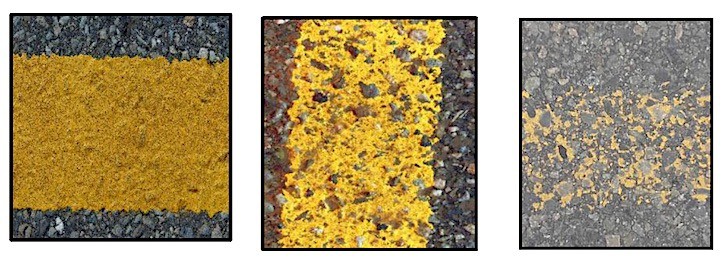New paint applications are being introduced on B.C. highways to increase visibility and stand up better to the grit and graders of winter.
Lane markers have been disappearing faster since the federal government introduced new environmental standards in 2010 that prevented the use of oil-based paints on highways. And B.C. drivers have noticed the difference.
“Over the four years that I’ve been minister the number one issue raised with me all over the province is line paint, and why does it not stick longer,” Transportation Minister Todd Stone said in an interview.
The ministry tested 18 different paint applications over four seasons in 2015-16, with further testing of the most promising ones this past winter. A “high build” paint, essentially a thicker application that cures well enough to be durable, and a new glass bead mixed with the paint to improve light reflection, are ready to go into use.
Stone said the high build paint has worked well in areas with winter snow conditions, with salt, sand and plowing. It was tested on Highway 97 near Prince George, the Coquihalla Highway near Kamloops and on Highway 7 near Maple Ridge.
The new glass bead formulation with normal paint will be applied first to Highway 14 on Vancouver Island starting in April.
Stone said the glass beads work well in areas with frequent rainfall, but can also be used with the high build paint. The new paints are about 30 per cent more expensive than the paint ministry contractors have been using, and an extra $1 million has been budgeted for line painting this year.
“We expect that they are going to last at least a season, or potentially two seasons longer than the old paint did,” Stone said.
B.C. transportation engineers have concluded the new paints aren’t as tough as the old oil-based paint, which exceeded federal regulations for “volatile organic compounds” from their petroleum components.
